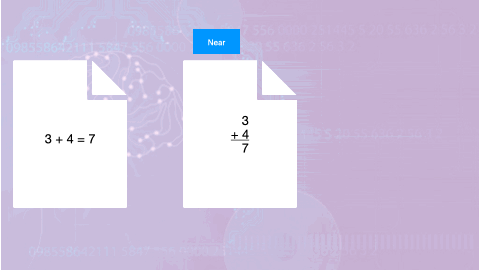
Reflections on Theory and Practice
In Pursuit of Understanding and Practices That Drive the Greatest Impact in Education
Knowledge Transfer
What is Transfer of Knowledge?
knowledge transfer refers to the application of knowledge and skills learned in one situation to another situation. It involves the ability of learners to take what they have learned in one context and effectively apply it to solve problems or perform tasks in a different context.

Transferring Knowledge is highly dependent on background knowledge and context. Both of these things can hider or promote knowledge transfer.
Near vs. Far
Transfer is generally discussed as Near vs. Far transfer.
. Near Transfer: this is the transfer of information to similar contexts.

Far Transfer: is transferring information to novel or different contexts.

A Continuum
A more useful way to think of transferring knowledge is a continuum. The beginning of the transfer continuum is the initial learning of something and you slowly build out farther and farther through new knowledge, new connections, and varied experiences.
For educators the intricacies of transferring knowledge can be deceivingly complex, especially for someone who has expert knowledge of a topic. I have come to realize that there is a good process for teachers to use that has helped me think about how knowledge can be transferred from near to far.
Probably the most controversial is step 1 the nearest form of transfer, and that is copying or repeating back. This is a step that many educators pass over as they think this is not a helpful form of learning. The reality is that they are not wrong, this kind of learning is extremely limited in its application, but I would argue it is incredibly important in the process of learning.
I'll go through the steps and why this model makes sense below.

Theory to Practice:
A teaching connection
A Series of Small Steps
Step 1: Encoding and Independent Replication:
In this initial phase, the objective is to impart a concept to students and subsequently gauge their individual comprehension. This process essentially serves as a replication of the same task, confirming that the knowledge or process I have just covered has effectively "transferred" and been encoded and is retrievable for the students. For example, if my goal is to teach sentence writing with a capital letter at the beginning, I might initially present a sentence like "The dog is happy."
At this point my first gaol might be to have them copy the sentence. If or when some of the students don't copy it with the capital letter, I know that the knowledge I am trying to impart didn't transfer to the students.
I have to figure out why and reteach.
A small but important next task might be to erase the sentence, and then request that the students reproduce the exact sentence. The need to retrieve the sentence from memory will be hard enough. At this stage they will tax their working memory just from combination of retrieving the sentence, figuring out how to spell the words and trying to add in the new bit of information which is to capitalize the first letter. The reality is that this simple next step is enough to trip up some students.
Another reason this process is good is while some students may find it easy, by this point in the teaching and learning process of capital letters, the students will have had two chances to write a sentence with a capital letter. This repeated practice is really important.
These steps might seem to small or insignificant, but I will again push back on the fact that thinking is coming from an expert point of view. Experience working with these tiny steps and knowing this minute breakdown is exactly what some students need.
Step 2: Independent Replication in a New Setting:
During this phase, students are assigned the task of reproducing a similar or even the same problem. However, what makes this phase noteworthy is that they do so after a brief pause or spacing event.
Even a very brief shift, be it from the carpet to their desks or from their notebook to a worksheet, introduces a spacing event that necessitates the transfer of knowledge from one context to another. Consistently I experience students often encounter difficulties in recalling the information I just taught. This transition holds educational significance primarily due to two factors: retrieval and spacing.
It represents a challenging facet of teaching and learning, particularly considering the novice status of the learners. As experts, it can be challenging for us to appreciate how these minor alterations can impact novices, but they unquestionably do.
To underscore this, consider the analogy of language learning. Even seasoned educators or learners, when learning something entirely new like a foreign language, will experience a similar phenomenon. They might initially comprehend a concept when taught, only to later sit down discover that the knowledge has seemingly vanished from their memory.
Step 3: Similar But Different, and Repeat:
This phase represents our true endeavor to facilitate knowledge transfer as commonly understood in educational contexts. Students need to repeat similar problems that have minor alterations. The Repetition of these subtly different problems plays a pivotal role here, as each iteration enhances retrieval and storage strength. Additionally, the repetition of these "slightly different problems” gradually incorporates new schemas into the retrieval process, broadening the students' conceptual understanding and allowing for further transfer.
Step 4: Spacing, Interleaving, and Retrieval:
This is where the strengthening and broadening of connections intensify. Considerable time is allocated, potentially in varying environments, to reinforce learning. Waiting a day or introducing interleaved practice are strategies that can further enhance knowledge retention. Moreover, assigning homework proves valuable when executed thoughtfully. It introduces both spacing and a new environment for retrieval, challenging students to recall information without the familiar cues of the classroom. This process also exposes students to diverse schemas, fostering the development of expansive neural networks that facilitate broader knowledge transfer.
Subsequently, educators should continue to space out the information through out the year and over multiple years while introducing new contexts for retrieval. This ongoing approach paves the way for successful knowledge transfer.
If you want to learn more about Knowledge Transfer:
-
https://www.youtube.com/watch?v=N8QfkT8L9lo
-
https://edtosavetheworld.com/2020/06/01/learning-transfer-what-is-it-and-why-does-it-matter/